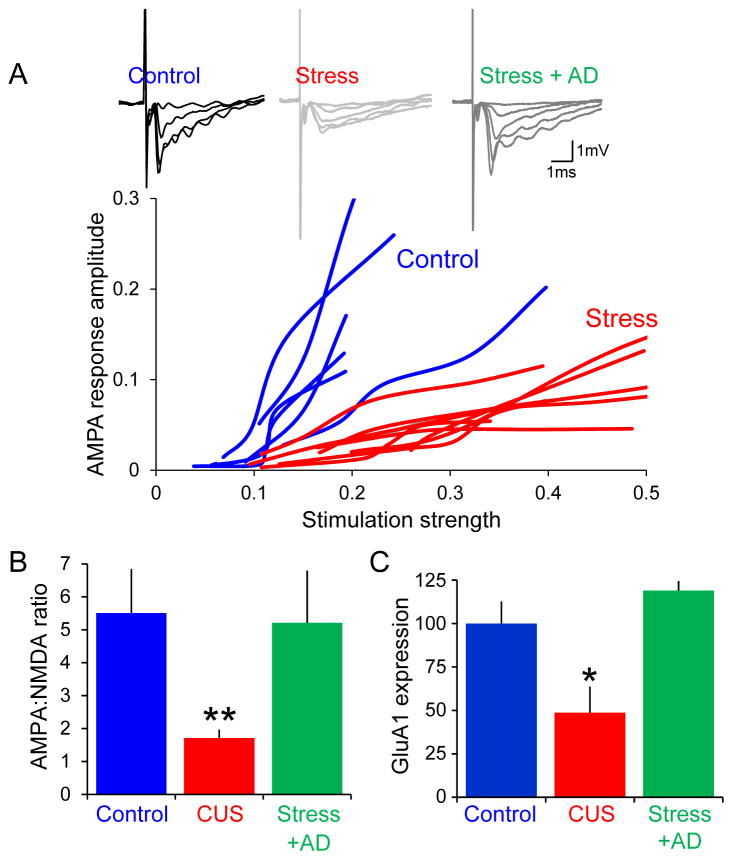Figure 3. Stress decreases AMPAR-mediated excitation and GluA1 expression at temporoammonic to CA1 cell synapses and chronic fluoxetine reverses these effects.
A. Field excitatory postsynaptic potentials (fEPSPs) are recorded in stratum lacunosum moleculare in response to stimulation of the temporoammonic (TA) pathway in Mg2+-free saline, allowing dissection of AMPAR- and NMDAR-mediated components. AMPAR-mediated transmission was reduced over a range of stimulation intensities after chronic unpredictable stress (red) compared to unstressed rats (blue). Quantification of AMPA:NMDA ratios (B) and GluA1 protein (C) reveals that the selective decrease in AMPAR-mediated transmission is due to decreased GluA1 expression. Administration of fluoxetine for three weeks to stressed rats restored both AMPA:NMDA ratios and GluA1 expression. Modified with permission from Kallarackal et al., 2013 [72].

